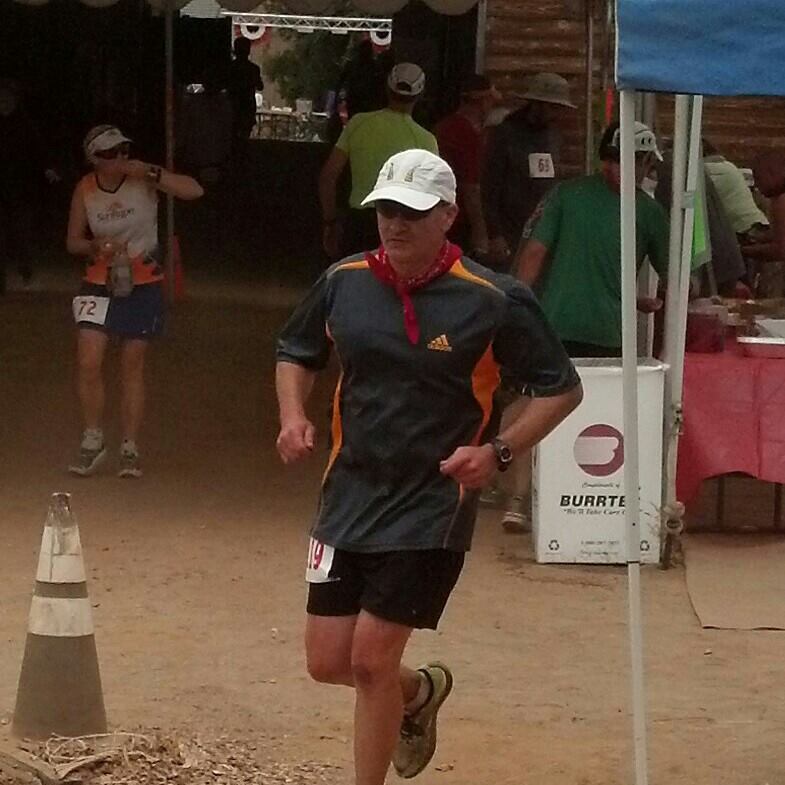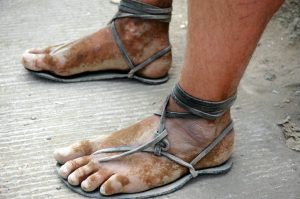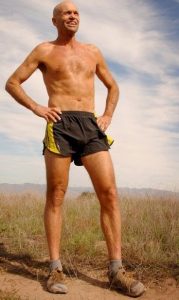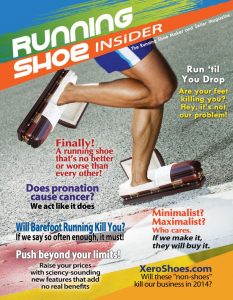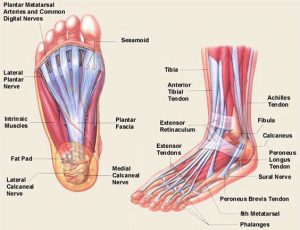For years, I have been a minimalist runner. I started with using zero drop shoes (these are shoes that have no lift between the heel and toe). These were nice because I was able to run the way I was meant to. But they cost an arm and a leg, did not last very long (about 200 to 300 miles) and still caused blisters and toe nail injuries. Then I tried running barefoot. This felt very good until I stepped on something (glass). I know if I would have stuck with it, I would have developed the tough soles needed, but I was miserable waiting for this to happen.
That is when I saw a video on how to make hurraches. Hurraches are sandals made by the Indians in Mexico. I first got the idea from the book Born to Run by Christopher McDougal (read this book!). The book is about a race with the Tarahumara Indians in southern Mexico. They made hurraches with rope and tire tread that they found on the roads. If fact, I learned how to make them from a video that Micah True (Caballo Blanco) who lived with the tribe for a time. Micah passed away in 2012. I know he is missed.
There are a few reasons I am making this a two part entry. First, I have a lot to say on the subject. You might actually say I am passionate on the subject. Second reason is talking about harraches and showing how to make them would make for a very long entry. I would rather keep you attention and just split it up.
First thing I would like to talk about is the reason to try minimalist shoes (hurraches) or barefoot running. In the barefoot world, shoes are known as “foot coffins”. Shoes are made to protect the foot. The problem is that the foot is far more pliant than they have been made out to be. In fact, we have been barefoot far longer than there have been shoes. Shoes, especially those that were made to “support” the feet, have done the opposite. They have weakened to feet (and ankles, knees, hips and back). Puritsts believe that one needs to run like we used to. When we were chasing animals extreme distances to tire them out and kill them for food (know as substinance running. It is still done is Africa. Read Born to Run). We were made to run with nothing more than our feet.
Before trying barefoot running, I suffered knee problems and plantar facietis. Plantar creates extreme pain in the soles of the feet. There is nothing to do about it, just need to work through it and rest. After dealing with this for a couple of years, I decided to do something about it. That is when I researched barefoot running and strengthening my feet. I have been a minimalist runner for eight years and I have only sustained one injury since and have increased my milage.
So why does everyone try this? Because it is hard. In fact, it could take a couple of years to build strength in your feet and ankles (it did for me). Also, it is not for everyone. Some do have foot issues that can only be resolved with the proper shoes, First, there is the change in running gait. The old “heal-to-toe” thing we learned in high school track needs to be unlearned. The proper foot strike is landing, softly, on the ball of the foot and touch the heel to the ground. This will happen easier when one shortens his stride. The best way to train is to stop wearing shoes. Walk barefoot and remember how you walk. Then run the way you walk. Need to see it? Just watch children run.
Finally, there is the need to build the muscles in the feet, achilles and calves. These are the attributes that are most weakened. It is very common to feel stress in those areas. This may require extra rest days to be scheduled (you will be sore especially in the calf area). This is why a lot of established runners refuse to make this type of change. They refuse to start over.
I have been running in minimalist shoes, barefoot and in harraches for the last eight years. The road was long and hard. But now I am reaping the rewards of stronger legs and more money in the bank (it costs me $10 to make a pair of harraches). My next post will show you how to do it.
Photo courtesy of:
kindertransport.org
runnersworld.com
pinterest.com
